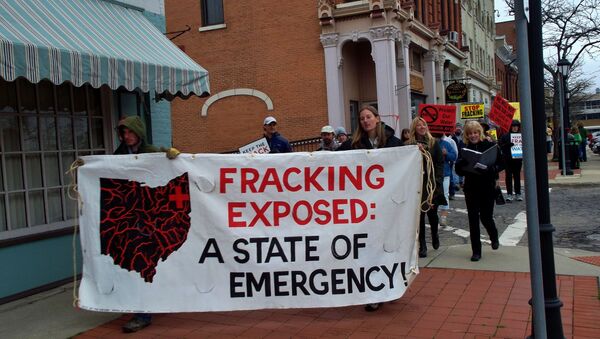The study released by the Bulletin of the Seismological Society of America indicates that hydraulic fracturing, or fracking, at new oil-and-gas wells in Youngstown triggered the tremors.
The report concludes that fracking operations induced a “rare seismic sequence” that caused slippage in an existing fault as close as a half-mile beneath the wells.
Previous studies have confirmed fracking to be the cause of tiny temblors that have gone unnoticed by most residents.
“It remains rare for hydraulic fracturing to cause larger earthquakes that are felt by humans,” the organization noted in a statement. “However, due to seismic monitoring advances and the increasing popularity of hydraulic fracturing to recover hydrocarbons, the number of earthquakes – felt and unfelt – associated with hydraulic fracturing has increased in the past decade.”
The connection comes as no surprise to residents experiencing these tremors in areas where hydraulic fracturing is applied.

With increased underground drilling, the number and intensity of fracking-related quakes has risen. Since November, the Dallas-Fort Worth area has recorded 25 earthquakes in total, and in 2013, residents of Azle, a Dallas suburb, felt a series of tremors. The average magnitude of these tremors has also increased, from micro-level 1.6-2.9 on the richter scale, to stronger ones (3.5-3.6).
Some experts have attributed the increase in earthquake magnitude to not only fracking, but to the injection of the waste it accumulates back into the soil, which is done under high pressure with a volume that widens cracks in the faults, raising the chances of earthquakes.
After the two biggest quakes were felt last March in Poland Township south of Youngstown, Ohio authorities ordered a stop to fracking at seven wells.
A spokeswoman for the state’s Department of Natural Resources, Bethany McCorkle, said Wednesday that the wells remained in production but that further fracking had been banned.
Fracking wells are sunk horizontally deep beneath the surface, where water, chemicals and sand are injected under intense pressure to break the rock and release the trapped oil and gas.
According to the study, only two of the seven wells, with segments closest to the fault, were inducing earthquakes.
“It seems that only the segments that were within about a thousand yards from where the fault was produced earthquakes,” seismologist Michael R. Brudzinski told the New York Times. “It appears you have to be quite close to the fault for fracking operations to trigger earthquakes. Having that sort of information helps us to see that this stuff is pretty rare.”
He added that the study underscored the need to monitor wells in seismically active areas, something Ohio has since required.
Dr. Brudzinski researched the Poland Township quakes with a Miami University geologist, Brian Currie, and a graduate student who is the study’s lead author, Robert Skoumal.




